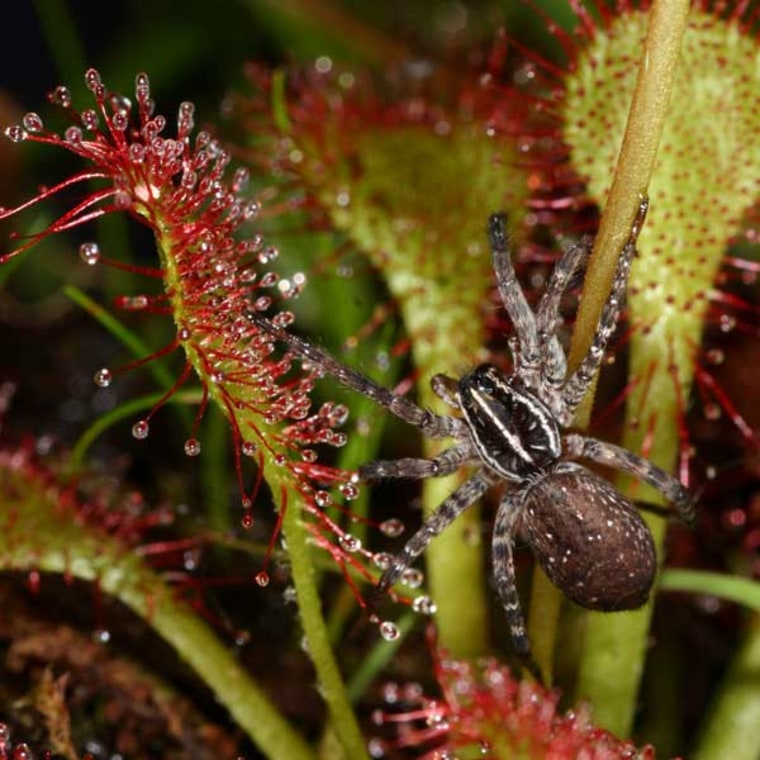Wolf spiders and carnivorous plants called sundews may compete with each other for food in the wild, a new study finds.
The two organisms, which both view small insects as tasty treats, seemed to influence each other's behavior in laboratory and field experiments, researchers will report in the Oct. 7 issue of the journal Proceedings of the Royal Society B.
Competition for scarce resources is a well-studied phenomenon. Zebras and gazelles compete for grass in the Serengeti. Dandelions and Bermuda grass vie for sun and nutrients on front lawns. But most studies on competition have focused on closely related species. No one had ever investigated competition between plants and animals before.
"We were really interested to see, can these species from completely different kingdoms have these really close interactions with each other?" said study co-author David Jennings, a Ph.D. candidate in the department of integrative biology at the University of South Florida in Tampa.
Cage match: plants vs. spiders
To find out, the researchers collected sundews, a tiny pink carnivorous plant found in the southeastern United States. Sundews are covered with sticky spines like bristles on a toothbrush. Insects are lured to the spines by their sweet smell, and then trapped and digested.
The researchers planted the sundews in terrariums in the lab and fed them crickets. Then they introduced wolf spiders into some of the terrariums. These web-builders share habitat and diet with sundews in the wild.
Sundews that shared quarters — and food supply — with spiders produced fewer seeds, stalks and flowers than sundews that had all of the crickets to themselves. Sundews without competition from spiders produced an average of 1.5 flowers, for example, while sundews with competition produced 0.75.
Taking it outside
The findings suggest that spiders can affect the health and reproductive fitness of plants, but the researchers weren't sure if the plants were affecting the spiders. So they took the experiment outside, taking a census of spiders and sundews in areas at two ecological research areas in Florida. Over three months, the researchers observed the spiders and sundews, counting the number of leaves per sundew, number of spider webs, and the size and placement of the webs.
They found that sundews and spiders did indeed eat the same types of prey in the wild. The spiders also seemed aware that sundews were capable of luring away their meals: The arachnids built their webs as far from sundews as they could without leaving prey-rich areas. They also built bigger webs when sundews were around.
However, the researchers couldn't confirm that the two species actually affected each other's survival or reproductive fitness, which is necessary for a competitive relationship, said Thomas Miller, an ecologist at Florida State University, who was not involved in the study.
"I'm not convinced that the competition really exists in the field," Miller said. "But they've certainly shown there is good potential for it, and that's a very nice first step."
To fully demonstrate the competitive relationship, Miller said, the researchers would need to cordon off areas in the wild, remove sundews from some areas and bar spiders from others, and then record the long-term effects on each species.
However, Miller said, the study was "awfully fun," and an important reminder to ecologists that very different organisms can compete. Invasive species, for example, are often thought only to compete with other species like them, he said, but this study illustrates their impact may be much wider.
The researchers are now working on field experiments to find out if sundews affect spiders' fitness in the wild. They're also investigating how other insect-eaters, like toads, might affect the competitive relationship.
If spiders and sundews do compete, which has the upper hand? There's no way to be sure yet, but Jennings is putting his money on the spiders.
"They can be mobile," he said. "The sundews are just stuck."
